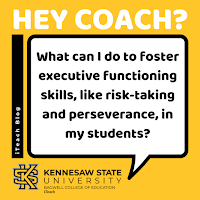While targeting the personalized learning principles of just in time direct instruction, mastery-based assessments, and varied strategies as well as the Engineering Design Process, this team of teachers implemented an integrated unit that had students and teachers alike pumped for learning!
Classes studied the European Exploration of North America and learned about the different explorers, the obstacles they faced, and their accomplishments. Taught through a variety of methods including direct instruction, curated digital resources, and student-paced Nearpod lessons. After all of the content had been taught, each class was then responsible for becoming an "expert" on their chosen explorer. Students demonstrated mastery by creating an artifact of their choosing to be included in the classroom exhibit. Peers collaborated and created digital artifacts using Chatterpix, Sway, PowerPoint, and coding maps using Ozobots with 3D printed boats or thinglink-esque poster presentations to demonstrate their learning.
In addition to the Social Studies concepts, students worked in Science class to learn how pollution by European Explorers impacted the environment. After learning about the effects of pollution on the environment, students were tasked with designing a Pollution Solution Prototype to help clean up water pollution. Students were also required to include an instructional card so the audience would understand the functionality of each prototype.

Teachers divided and conquered to prepare for this endeavor. The STEM teachers headed up the Ozobot component by sitting down with their KSU iTeach Coach, Ms. Vaughn, to learn how to code the Ozobot. Their excitement certainly transferred to the students as they learned for themselves prior to creating their finals products. The Humanities teachers were equally creative in their use of Chatterpix, Sway, PowerPoint, and the Engineering Design Process to provide all students with additional choices in how to demonstrate learning.
When all the hard work including designing, making, researching, and recording was complete, classes participated in the museum walk. Students excitedly journeyed from exhibit to exhibit, viewing each of the artifacts, listening to the recordings, watching the Ozobots traverse the routes of the explorers, and testing out the pollution solutions. Rotating through each of the other classroom exhibits gave students the opportunity to learn something new about each of the explorers featured as well as showcase their work with an authentic audience and garner honest feedback. Students then participated in a wrap up session with their classes to discuss the experience.
The willingness to allow students to make choices about their learning is empowering and can produce truly amazing results. The enthusiasm of these students was almost palpable as they perused each exhibit, taking it all in. These teachers worked together as a team and provided an awesome personalized learning experience for their students to learn, grown, and have fun!

Karleen Vaughn
Instructional Technology Specialist
Kennesaw State University iTeach
@iTeach_Karleen




Comments
Post a Comment